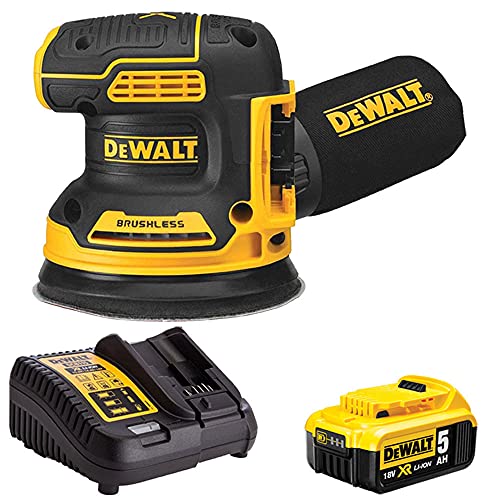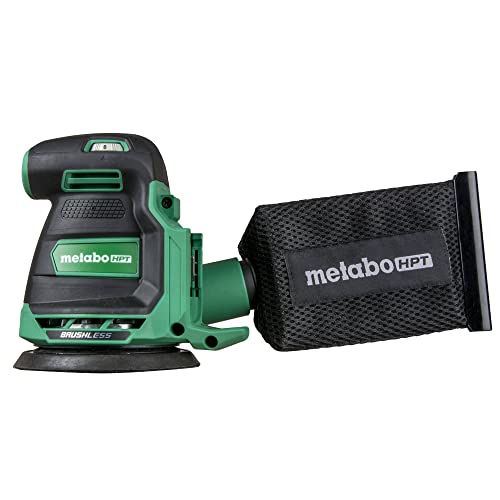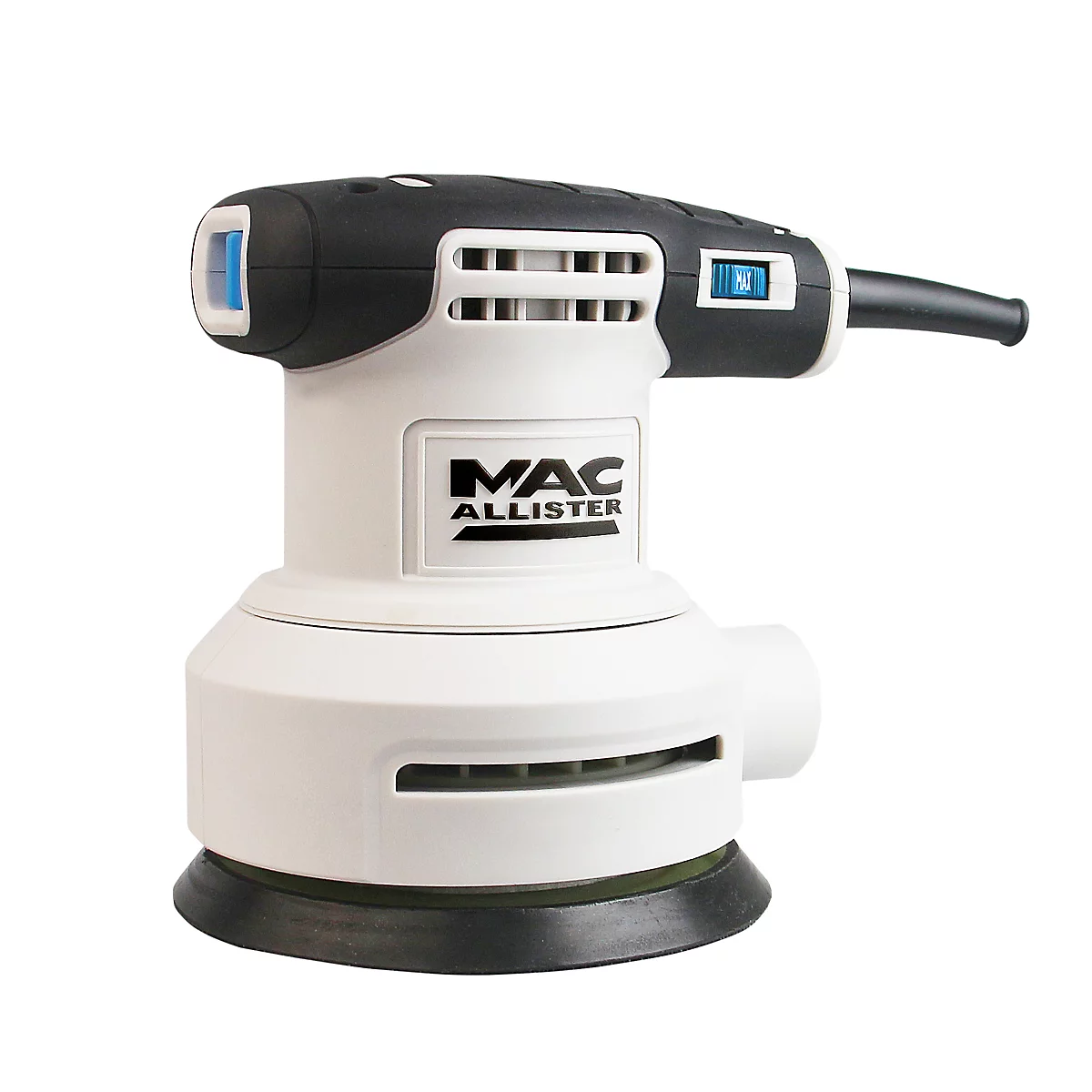6 common mistakes to avoid when learning how to use an orbital sander
Using an orbital sander may seem straightforward, but there are some simple and subtle tips and tricks that will result in a smooth, professional finish
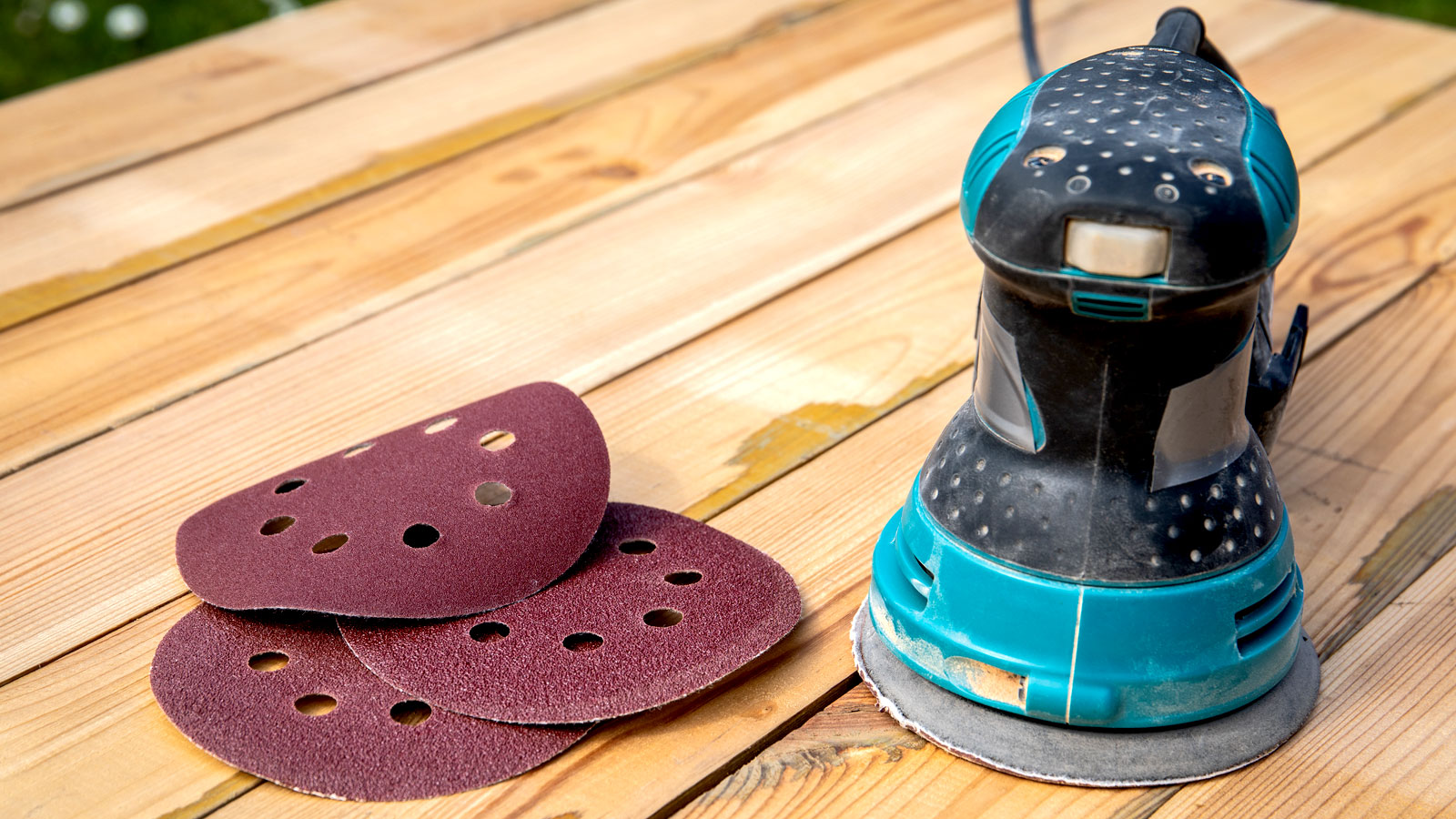
It goes without saying that knowing how to use an orbital sander will mean you will get a better finish. And. although you can take it straight out of the box and start sanding without any previous experience, you will make mistakes. The fact is, even if you’ve been using an orbital sander for a while as part of your sanding methods, you can still leave annoying swirls, pits and rounded corners.
Getting your hands on a quality brand will make a difference, but you still need to know how to handle the sander, however good it is.
Here we run through the basics that every DIYer needs to know, as well as revealing the mistakes the pros say you must avoid if you want to a finish you’ll be proud of.
How to use an orbital sander: The basics to get you started
For those wondering what is an orbital sander – or a random orbital sander, as this tool is also sometimes known – and how it differs from other sanders, then it's key to say the defining feature is the round pad. This accommodates a circular sandpaper disc and as such, this hand-held power tool is used to sand surfaces in a circular motion.
An orbital sander is a forgiving power tool, but there are still a few simple steps to follow to get the most out of the best orbital sanders. Here we run through the basics that you need to know to get started.
1. Add a sanding disc
Before you can start sanding you will need to attach a suitable sanding disc. Orbital sanders typically come with what is known as a hook and loop system. This is similar to velcro, making it easy to add and remove sanding discs.
Line up the holes and edges, then press the pad and ensure it's secure. Check out our sandpaper grades guide to determine what you need for different projects.
Bring your dream home to life with expert advice, how to guides and design inspiration. Sign up for our newsletter and get two free tickets to a Homebuilding & Renovating Show near you.
2. Attach a dust bag
Orbital sanders have a dust outlet that directs dust away from the sander. To collect the dust and stop it spreading everywhere add a dust bag or attach to a vacuum. Most orbital sanders will come with a dust bag included.
3. Secure the surface
If you are sanding a loose piece of wood or other material, you need to secure it in place so you can sand without the material moving. Kevin Keen, owner of Keen’s Buildings, says, “before you even think about sanding, be sure the board is locked down. Use a bar clamp, F-clamp, or C-clamp to hold the wood against the bench so it can't move," he adds, warning, "don't make it too tight.”
Mark Irving, building expert at Build & Plumb suggests an alternative. “A rubber pad can be used to secure your wood in place. Simply, place the rubber pad underneath the wood when sanding, to provide grip and prevent the wood from moving”.
It may be tempting to be more manual, but Kevin warns against this: "Holding stock with your bare hands? Only as a last resort.”
4. Start up and sand
Place the orbital sander on the surface of the material you want to sand and switch on. This helps ensure that the sander starts flat and lessens the chances of the pad edge digging into the surface.
Keep the sander flat and sand with the grain where possible, as this will give a better finish. One tip to make sure you are sanding wood evenly is to mark the top of the surface with light pencil strokes. When they disappear you can move on to the next section of the surface until all the marks are gone.
5. Finish, inspect and clean
When finished, switch off the sander and lift off the surface. Give the surface an inspection to make sure it is as you want and doesn’t feature any marks. Empty the dust bag and wipe the sander clean with a dry cloth.
Try these sanders to get a smooth finish

Kevin has been in the construction industry for 25 years and handles everything, from the distribution and installation of portable structures to financing and manufacturing. He can speak with authority on every aspect of building.

Mark has over 20 years of experience in the building sector, leading to a wealth of knowledge surrounding building and renovating that he enjoys sharing with others who are looking to complete their own building projects.
Six common mistakes DIYers make when using an orbital sander
It's easy to get carried away when using a new power tool, but you need to let the sander do the hard work. Follow the simple rules below to get the finish you want.
1. Don’t press too hard
When using a power sander there is often the urge to add more pressure to the pad and press down. While this technique might work when sanding wood by hand, it's not an effective solution when using an orbital sander.
You don’t need to push down, the weight of the sander and you holding the sander is enough for the sander to do its job effectively. If more than necessary pressure is added it can lead to unwanted swirls on the surface.
2. Keep it flat
It’s a pretty simple mistake to make, but to get the best finish you need to keep your orbital sander pad flat. This helps ensure that the surface stays flat when you have finished sanding. Don’t spend too long in one area – try to sand evenly across the whole surface.
When sanding near edges and corners it's especially important to keep the sander flat otherwise you’ll end up with rounded corners. One quick tip is to only allow 20% of the pad edge to go over the end of the surface. This greatly reduces the chances of any rounding.
3. Stay slow
There’s no need to quickly move an orbital sander along a surface. The sander is doing the hard work, so move slowly and this will help reduce any marks on the surface.
4. Line up sanding disc holes
It’s not critical that you line up the holes in your sanding disc, but it's highly recommended. Mark Irving points out, “the holes on a sanding pad are designed to prevent dust from accumulating between the sandpaper and the surface being sanded."
“When dust accumulates under the sanding pad, it can reduce the pad's abrasiveness and damage the surface you’re sanding," he adds. Keen agrees stating, “no match-up, no suction, so grab discs with the right hole pattern."
5. Go with the grain
When sanding wood, going with the grain gives a smoother finish. Going against the grain will raise the wood grain, which is more noticeable when you varnish or stain the surface. It's not critical that you go with the grain if the surface is to be painted, but it is helpful.
One tip is to sand straight up the grain – from bottom to top – and then do another strip, but overlap by around 50% of the strip you have just sanded.
6. Replace your sanding discs regularly
Sanding discs are relatively inexpensive, so it's a good idea to invest in a large batch of good-quality sanding discs in various grades, like these 100pcs 125mm Sanding Discs from Amazon, as soon as you get your orbital sander.
How long a sanding disc will last depends on several factors. “The quality of the disc and how often you are sanding make a difference," says Mark Irving. “You can typically tell when a sanding disc needs replacing by looking at the surface of the disc and identifying signs of wear and tear or damage," he adds. "If the sanding disc is heavily worn or has small tears on its surface, then it needs replacing.”
Kevin Keen reveals what can speed up their decline: “hard maple, oak, or painted surfaces chew through them fast – and leaning on the sander speeds the death.”
“Swapping every 15–30 minutes keeps momentum," he suggests, as does choosing a quality brand. “Better brands, such as 3M, Mirka, Diablo and Norton, all stay sharp longer and clog less, saving you cash over the haul.”
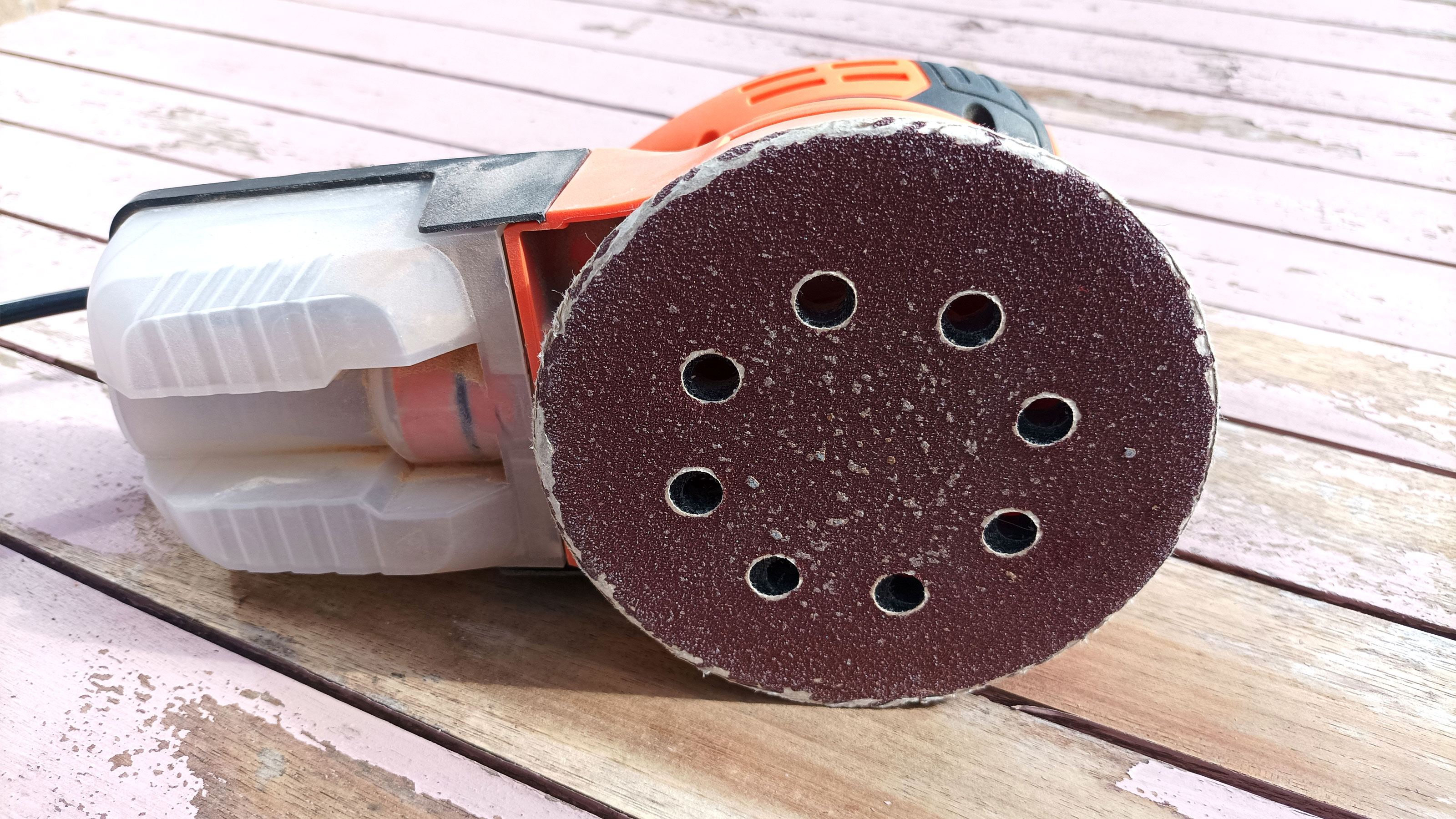
FAQs
Why does my orbital sander jump?
There can be a few reasons for this including the sanding disc not being attached properly to the pad, the speed is too high on a variable speed orbital sander, or you are working on an uneven surface which is causing the sander to tilt and dig into the surface.
An orbital sander is a good all-rounder, ideal for most sanding jobs, including sanding skirting boards. Once you have a smooth, skirting board surface ready to go, make sure to check out our painting skirting boards guide to get a good-looking finish. For more intricate skirting boards you may need a different type of sander to get the finish you need before painting.
Steve Jenkins is a freelance content creator with over two decades of experience working in digital and print and was previously the DIY content editor for Homebuilding & Renovating.
He is a keen DIYer with over 20 years of experience in transforming and renovating the many homes he has lived in. He specialises in painting and decorating, but has a wide range of skills gleaned from working in the building trade for around 10 years and spending time at night school learning how to plaster and plumb.
He has fitted kitchens, tiled bathrooms and kitchens, laid many floors, built partition walls, plastered walls, plumbed in bathrooms, worked on loft conversions and much more. And when he's not sure how to tackle a DIY project he has a wide network of friends – including plumbers, gas engineers, tilers, carpenters, painters and decorators, electricians and builders – in the trade to call upon.
